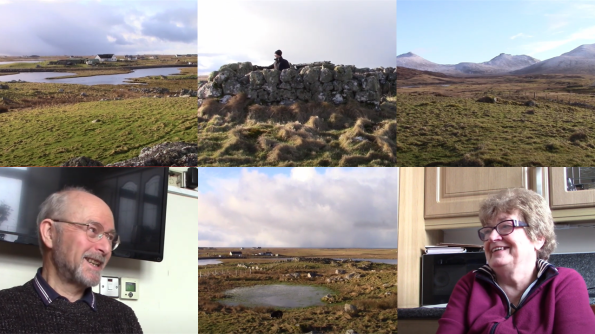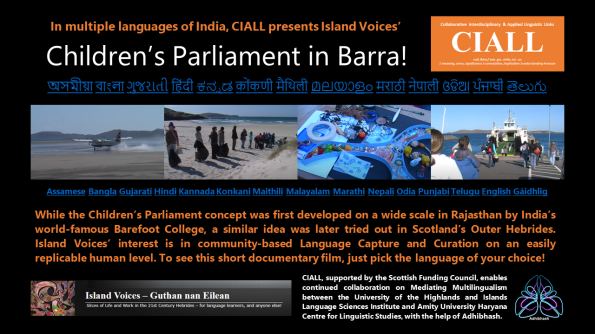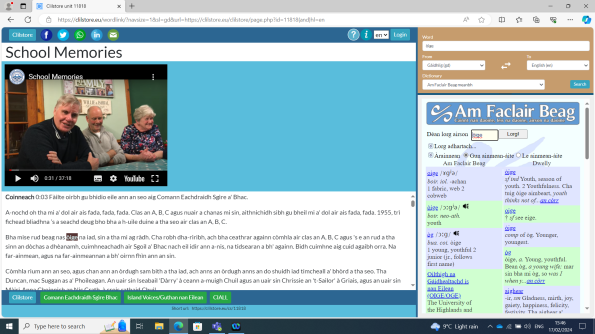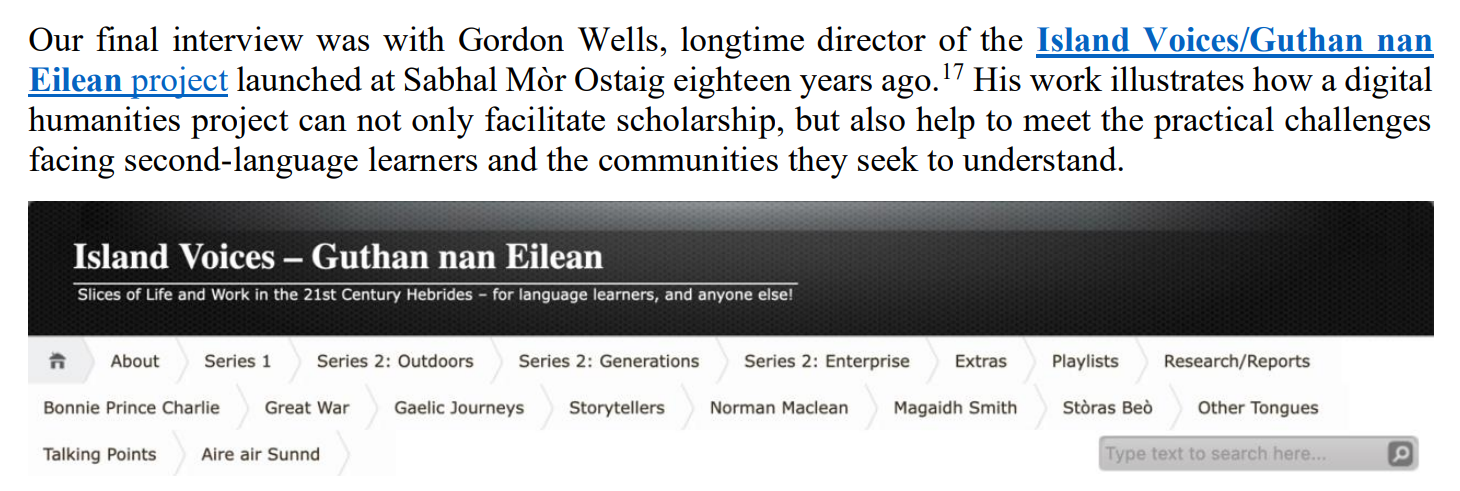Archive
CEUT Reflections 4
Here’s the fourth of our series of blogposts by Mary Morrison, with help from Archie Campbell and Zsuzsanna Ihar, in which she reflects on the Aire Air Sunnd project led by Comann Eachdraidh Uibhist a Tuath. As with her previous posts, comments are welcome!
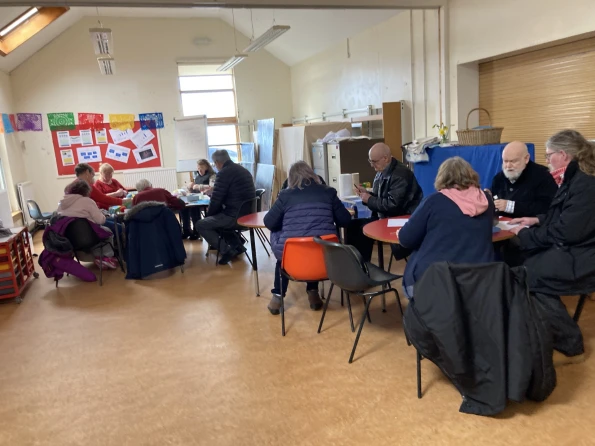
Mary writes:
Cafaidh Gàidhlig agus Feasgar Dimàirt.
‘Even the sheep and cows seemed to know who we were.’
During February and March the wellbeing and Gaelic groups have spent an interesting time sharing our thoughts about the place of North Uist, based on the key findings of the CEUT 2023 Community Survey. We have tried to explore further the unspoken, deeper meanings lying beneath our concerns, in order to provide more pressing evidence to convince potential funders of the urgency of our bids for the refurbishment of Sgoil Chàirinis, as a Gaelic, heritage and wellbeing community centre.
The common concern underlying these activities is our attempt to define CEUT’s role in so far as it may contribute to the local communities’ sense of wholeness, robustness and cheerfulness. The project wants to encourage some form of cultural shift, using the aspects of our place that are our greatest assets to fortify the island’s biological, environmental and human wellbeing. The wisdom inherent in vernacular voices and local practices may be best suited to reach the centres of power and exert some influence?
The ideas developed during Feasgar Dimàirt will also be incorporated into a community mural, (or separate panels of such a wall hanging) to celebrate the unique heritage and resilient Gaelic culture of North Uist – a collaborative visual legacy for the project, and a way of combining a wide range of the communities’ artistic and storytelling talents. We are grateful to our partners here, Caraidean Uibhist and Sgoil Uibhist A Tuath for collaborating so willingly in this placemaking effort.
To begin the process of mural shaping we discussed what made us most happy about living on North Uist. The listening was intent, the group itself seemed at home, offering respect, calmness and space to put complex ideas and feelings into words, at our own pace, often qualifying and refining these.
Our recurring ideas:
- the magic or spell of the place, the land and its unique, unchanged qualities
‘Clarity of the light’, ‘changing colours of the water’, ‘layers of colours of the sand the seaweed and the sea as it stretches to infinity’, ‘poetry of creation’, ‘the sound of the sea’, ‘roaring like traffic’, ‘mindfulness’, ‘losing yourself’, ‘birdlife”, ‘walking for ever without a destination’, ‘the capacity of the environment to change so suddenly’, ‘peace and beauty’, ‘a constant surprise’.
- identity, family and ancestors – especially for our indigenous dwellers
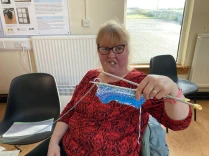 Gaelic method of reciting of the male members of a family tree, sloinneadh, all the precious ‘connections to the local community’, heritage of knitting, peats, creel and rope making, weaving, families widening out but often returning, ‘recognising our closeness to other cultures‘, ‘confidence in new life’, growth – babies of all species- keeping the ceilidh culture and the songs going, the ‘friendliness’ of the community.
Gaelic method of reciting of the male members of a family tree, sloinneadh, all the precious ‘connections to the local community’, heritage of knitting, peats, creel and rope making, weaving, families widening out but often returning, ‘recognising our closeness to other cultures‘, ‘confidence in new life’, growth – babies of all species- keeping the ceilidh culture and the songs going, the ‘friendliness’ of the community.
- placemaking, local names, wells and the need to map, signpost and mark these
‘Views that have remained unchanged from what our ancestors saw’, noticing the changes in coastline, species, disappearance of Gaelic, wells, standing stones and their stories, some urgency to preserve. ‘Getting more sentimental as I grow older’. Mention here of milestones, waymarks trails, mapping the area for future generations and visitors, with the stories attached to them.
- and for settlers or returners, the profound sense of suddenly belonging, feeling at home and enriched by the place
‘Last night the tide was very high, I went out and stood, just watching it.
I suddenly felt so glad to be living.’
‘Glad to be here’
‘Coming from a dry, hot and dusty area, the silence, nothing, the sound of the sea was astonishing.
‘Even the sheep and cows seemed to know who we were’
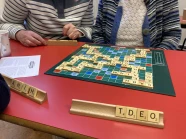 The Cafaidh Gàidhlig sessions were also held in Sgoil Chàirinis over February and March. Smaller numbers here made these more intimate occasions and provided Gaelic speakers with an opportunity to speak freely in an informal setting. Games and learning activities, including the new Gaelic version of Scrabble and a beginners’ Gaelic lesson were available each morning.
The Cafaidh Gàidhlig sessions were also held in Sgoil Chàirinis over February and March. Smaller numbers here made these more intimate occasions and provided Gaelic speakers with an opportunity to speak freely in an informal setting. Games and learning activities, including the new Gaelic version of Scrabble and a beginners’ Gaelic lesson were available each morning.
Gaelic speakers were able to engage fully in profound conversations without having to give way to English. What was noticeable, to a learner was the ‘comfort’ of the speakers, the remarkable concentration on listening to each other, the lack of interruption, the implicit natural respect in turn taking, the quality of engagement, agreement and reinforcement for each speaker, the rapidity of the flow of cadence and expression, together with the ease and frequent hilarity of the discussion. To a learner, it felt like a privilege to be included so fully within the ‘cosmos’ of the language as it is spoken naturally, something that lessons rarely capture.
Areas discussed included:
- people’s experiences of attending school away from Uist and living in school hostels and all that that entailed in terms of displacement and Gaelic use
- broader discussion of the use of the Gaelic language in the Uist community
- the urgency of what we can do to ensure that Gàidhlig has a future as a viable community language
- recognition that we need to make people aware that the language is here, and to use it in as many contexts as possible (for example, a young woman who works in a local supermarket told us that it is quite normal for her to use Gaelic in her encounters with customers, but less so in other settings)
- we recognise the use of Gaelic depends heavily on the context. Discussion of the importance of parents of those in Gaelic-medium education using Gaelic in the home and socially
- recent research has shown that Gaelic has been losing its ‘domains’ of use in the public sphere, but also in social life, particularly amongst the young.
- use of digital, Gaelic and bilingual mapping for waymarking walks to local heritage sites
There followed a discussion about activities which would promote Gaelic and provide a greater presence for the language in the community.
- one man present had provided crofting life experiences in the past
- CEUT has organised summer walks to sites of interest over the past few years. The walks have been led by Gaelic speakers and delivered primarily in Gaelic. People have commented on how much they enjoyed listening to the information being presented in Gaelic, even if they didn’t understand all, or indeed, any of it. An English ‘crib sheet’ was always available .
- the valuable interviewing and recording work which has taken place over the years, preserving people’s language, knowledge and experience. This work is very much ongoing and can be found on Guthan nan Eilean. It can also also be enriching for both interviewer and interviewee
- The observation was also made that the register of Gaelic language used depends heavily on context and setting
A discussion followed as to what may be done to ensure that Gaelic has a viable future as a living community language in the face of many challenges. The most pressing being the lack of Gaelic use among the young, for whom English tends to be the default language, even for those attending Gaelic-medium education.
Members of both groups expressed a wish for the two activities to continue and we are hoping these will become monthly CEUT events, keeping up the momentum, closeness and energy the pilot events have inspired. We have recorded the speakers who have led the discussions so far and still have more to record, especially the evening talk on Coastal Erosion with Stuart Angus in the final week in July.
As Michael Newton states in ‘Warriors of the Word’:
‘As the Gaelic sense of place is one in which communal history is embedded in the placenames attached to landscape features, it depends to a great degree upon understanding the language in which the placenames were coined’.
Taighean-tughaidh playlist
Island Voices has created a new playlist on the YouTube video channel for the collection of recordings made about Uist’s taighean-tughaidh – thatched houses. First contributions have come from Tommy MacDonald, telling some of the history from the site of Tobhta Mhic Eachainn and its connection to the “French Macdonalds”, and then quizzing his wife Betty on her memories of being raised in a taigh-tughaidh.
These recordings have been broken up into bite-sized manageable chunks.
In the first two from Tobhta Mhic Eachainn, Tommy presents some stories about Neil MacEachan and his son Alexandre – the “French Macdonalds” – from the remains of Neil’s original house, which was later to be visited by the Duke of Tarentum in an act of filial homecoming following the Napoleonic wars. The video descriptions include links to Clilstore online transcripts for both of these clips, which are also optionally subtitled.
The conversation with Betty comes in four parts. In the first section Betty recalls who built her house (her grandfather), and aspects of her childhood life on the croft, including the herding and milking of the cattle, as well as some of the thatching process as she remembers it.
In the second part Tommy and Betty go on to discuss some of the stiff challenges that would be entailed in keeping a traditional thatched house on a par with modern standards. Talking about the cèilidh culture of earlier times, Tommy recalls how stories would be shared between family members and visitors – some of which remain unexplained to this day.
In the third section Betty and Tommy’s attention turns towards food and drink, and the important place of staples such as eggs and milk – and sometimes rabbit. Services such as electricity and water were a relatively recent introduction. They recall some of the other thatched houses in the area, with a handful having been done up to meet modern standards.
Finally, in the fourth part, Tommy and Betty share memories of more recent times, when a thatched house was converted into a hostel for tourists, under Betty’s mother’s care. In the early days visitors would often stay for weeks, helping out on the croft, and they are fondly remembered. To end, more stories are shared of amusing and perplexing incidents.
Again, Clilstore links are available in the video descriptions, with auto-translatable subtitles an additional option for learners or non-speakers of Gaelic.
The seventh video in the playlist is a longer “omnibus” edition of the Tommy and Betty conversation, which is presented without transcript or subtitles.
With Tommy planning further recordings in the community we can expect more additions to this work in progress in coming weeks, with ongoing CIALL support and in collaboration with the UHI archaeologists based at Cnoc Soilleir.
Jamiekan ina Wielz
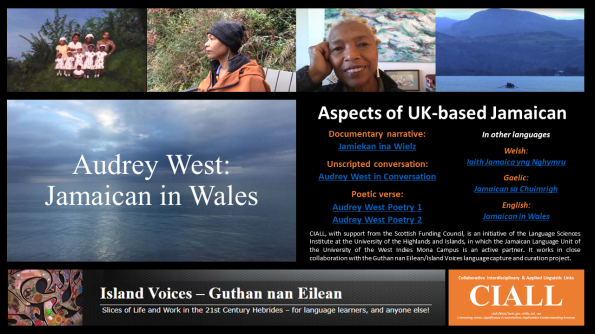 Select any video clip named in this landscape poster, or use the phone-friendly portrait layout.
Select any video clip named in this landscape poster, or use the phone-friendly portrait layout.
Island Voices is extending its “language capture and curation” model, with CIALL support, to new contexts, new genres, and new languages, including the recording of aspects of UK-based Jamaican language use. Gaelic enthusiasts can rest assured this development does not represent a move away from our key linguistic interest in the Outer Hebrides! Far from it, as we engage with other language communities near and far, new opportunities are created for fresh spoken material in video format in Gaelic (and English – and other languages).
We recently filmed Jamaica-born, but London-raised, artist and poet Audrey West at her home in Wales. (Keen followers may well recognise Audrey from her previous contribution to our “Talking Points with Norman Maclean” debates.) We have now created Island Voices-style short video clips in the familiar “documentary” and “interview” formats, while adding a third category of “recitation”, newly included to capture Audrey’s poetry. These films are all listed in the poster above. You can click for either landscape or portrait versions to access live links to any and all of the videos created,
We’re also indebted to Dr Joseph Farquharson from the University of the West Indies Jamaican Language Unit (another Talking Points contributor!), for overseeing the creation of the documentary script in the institutionally approved Cassidy-JLU orthography. Joseph and the JLU team have been extremely busy recently, also providing expert advice to Kingsley Ben-Adir and other cast and production team members for the “Bob Marley: One Love” biopic. As one commenter(!) put it, this YouTube discussion provides “really interesting insights into how skilled linguistic, particularly phonetic, analysis and description can percolate beyond academia and deliver practical applied impact. Bravo JLU!”
This system has enabled regularised subtitling of the clip on sound linguistic principles. Ironically, as YouTube/Google Translate does not recognise Jamaican as a language, we have paradoxically been forced to label the language used in the Jamaican documentary as “English” in order to be able to add the proper Cassidy-JLU subtitles which underline its separate status! We can confidently predict that the YouTube auto-translate function, which we normally commend, is going to struggle with this!
Our aim, in due course, will be to also create a Clilstore transcript incorporating the new Custom Dictionary tool, along similar lines to previous contributions from the Jamaican Language Unit.
We have been demonstrating for some time through “Other Tongues” that the re-purposing in different languages of documentary work in our local community context can be accomplished relatively easily and simply. And we most recently illustrated this at scale with the Children’s Parliament in Barra film. The wider point is that this can be a 2-way street, or perhaps a multi-lane spaghetti junction! With Audrey’s documentary we’ve started with a film made originally in Jamaican and, in a reversal of previous examples, worked up a Gaelic version from it. Not only that, we’ve got Welsh and English versions too!
As hinted in our Duncan Ban MacIntyre piece, “Jamaican in Wales” is just the first of a short series of collections in similar style that explore new fields for Island Voices, including poetic expression, and in “displaced” or “exile” contexts. This is work in progress, with more to come from other island geographies.
Di stuori stil a gwaan. Jos laik Bob Marley se, “Wi faawad in dis jenarieshun chrayomfantli!”
Back School Memories
We’ve previously drawn attention to some of the fascinating YouTube videos coming out of Comann Eachdraidh Sgìre Bhac, and to the fact that a number of the Gaelic ones have now been enhanced with optional same language subtitling (which can also be auto-translated into numerous other languages, including English).
Of course, once the subtitling has been done, that also forms a base on which other platforms can be built – such as a learner-friendly “Clilstore” unit. This is an online tool which creates a new webpage with the video embedded alongside a scrollable text, so you can look at and listen to the video while at the same time following the transcript in real time. Plus, there’s a special trick which allows learners to click on any word they don’t know and immediately gain access to a dictionary translation of it.
So here, with support from the University of the Highlands and Islands’ “CIALL” initiative, is another example of the Clilstore software being put to use with a community-produced recording about School Memories from Sgoil a’ Bhac, with Coinneach MacÌomhair in conversation with some of his former classmates.
Clilstore Unit 11818 – “School Memories”: https://clilstore.eu/cs/11818
Scottish Studies goes fully online
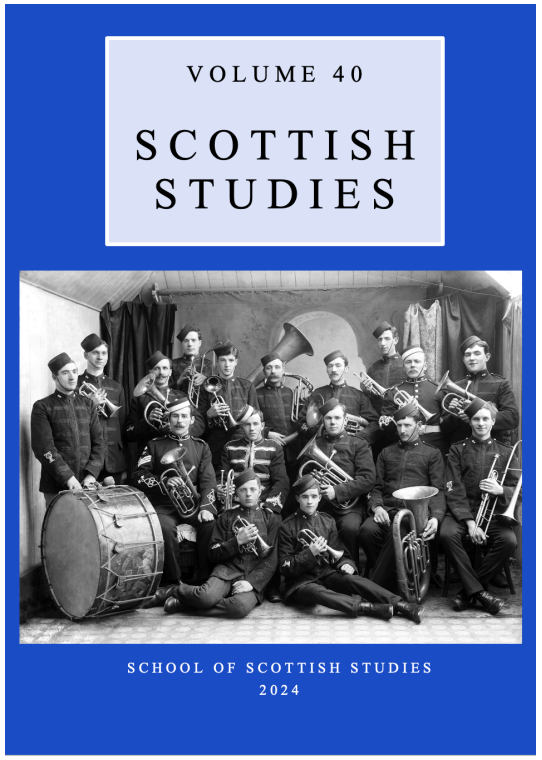 There are numerous points of interest in the newly published Volume 40 – the 2024 issue – of “Scottish Studies”. Notably, this open access journal of the School of Scottish Studies at the University of Edinburgh has now gone fully online. Virginia Blankenhorn, the editor, gives a good account of the various reasons why this makes sense:
There are numerous points of interest in the newly published Volume 40 – the 2024 issue – of “Scottish Studies”. Notably, this open access journal of the School of Scottish Studies at the University of Edinburgh has now gone fully online. Virginia Blankenhorn, the editor, gives a good account of the various reasons why this makes sense:
“In addition to saving trees, there are considerable advantages to online publication which we believe more than compensate for the lack of a printed volume. First and foremost, reduced costs will make it possible to publish more frequently – at least once every eighteen months to start with. Second, digital publication will allow easy access from the content of an article to other online resources. An author writing about song, for example, will be able to supply hyperlinks to sung performances available online, thereby allowing readers to hear the songs themselves – a gift to readers unable to read musical notation, and an added benefit to those who do, but who understand how much information such notation typically leaves out. Finally – and, as editor, I deeply appreciate this feature – digital publication will allow errors to be easily and silently corrected as soon as eagle-eyed readers point them out.”
From the Island Voices standpoint, the point about the multimedia affordances of online publication makes particularly good sense, supporting our consistent stance on the primacy of speech. The notation of language, as with music, is an often inadequate and only approximate substitute for the real thing!
So we are, of course, doubly delighted that Virginia also found space for an interview with Gordon Wells about the Island Voices project in a piece on “Digital Developments in Scottish Studies“, alongside parallel contributions from Will Lamb (Edinburgh) and Natasha Sumner (Harvard). Okay, it’s presented here in written format – but with plenty of live links and URLs in the footnotes. Ceum air cheum…!
Our hearty thanks are due to the journal and its editor for finding a space for Guthan nan Eilean in the world of Scottish Studies!
Retro Retrieval
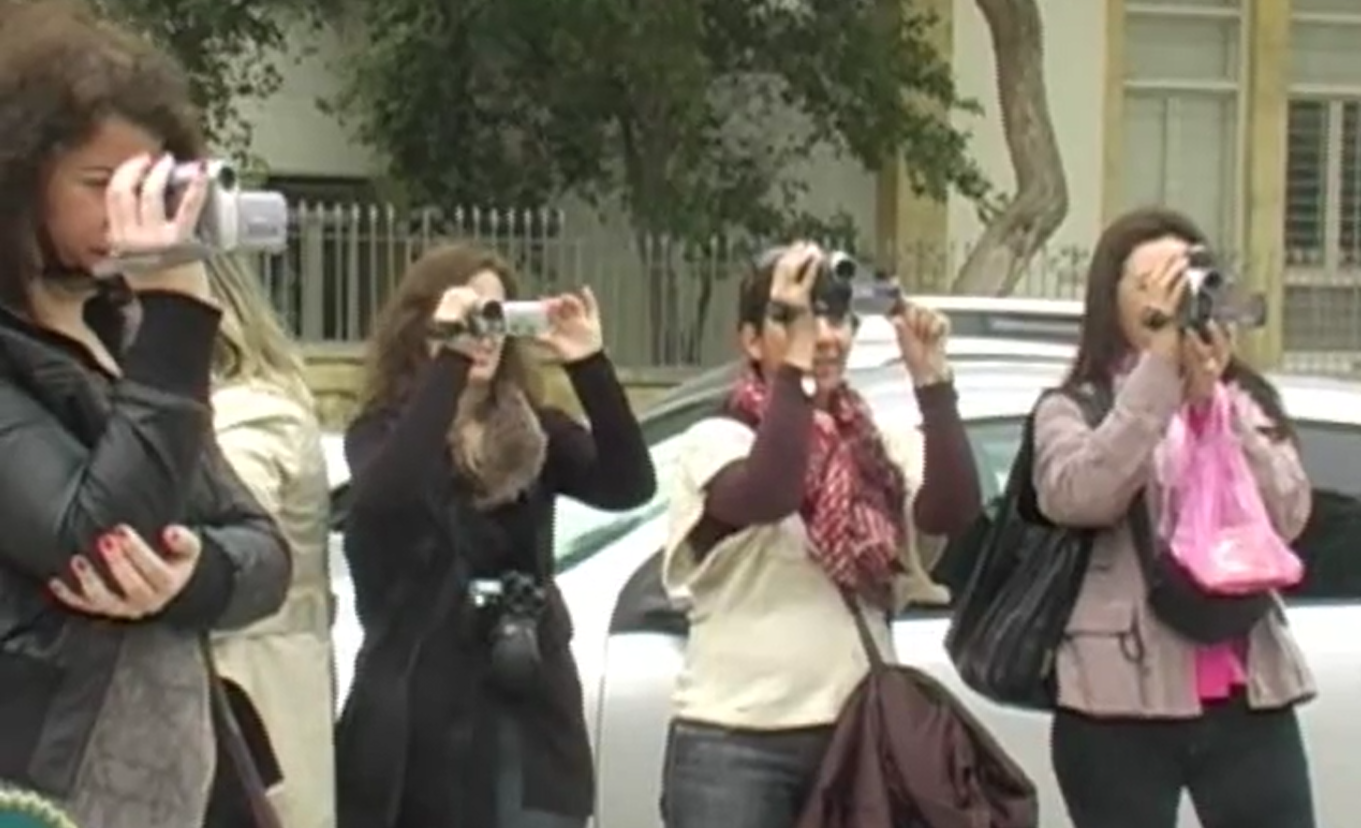
We’ll continue our review of previous Gaelic recordings into the winter months, given the popularity of our autumn social media season. But we’re going to start the New Year with something a little bit different – and warmer – while sticking with the Gaelic unifying theme. We’ll kick off with some earlier films made “in the style of” or “about” Island Voices, before returning to more classics from the original series.
Island Voices in fact owes its inception to the stimulus provided by the EU’s Leonardo funded POOLS project of 2005-2007. It was through that successful partnership that the Guthan nan Eilean idea came into being – and won the 2007 European Language Label. POOLS turned out to be just the first of many follow-up projects that built on the original theme, with Island Voices linked to many of them.
POOLS-2 (2009-2011) was an early example, again with a video production element included, which enabled us to link with other European islands like Cyprus and Malta. In these demo clips from a 2010 video workshop in Nicosia, the fundamental learning point is made that serviceable video-making need not be the exclusive preserve of industry professionals. And in language teaching terms, it can be a highly productive process, with multilingual knock-on benefits potentially within reach in return for the initial creative input.
These videos were put together as a demo for language teachers interested in the use of ICT in language teaching. Participants spent a morning taking pictures. The following day, after pooling their resources, they each edited together their own short film, using this demo as an exemplar.
They were recently “rediscovered”, and the Gaelic version has now been additionally equipped with the learning assisting enhancements that have since become available – including the now standard Clilstore transcript (Unit 11794), plus optional YouTube subtitles (that can further be auto-translated through the Settings Wheel).
A bheil Portagailis agad, neo am bu toil leat beagan ionnsachadh?!
Tionndadh Gàidhlig:
English version:
We’ll place direct YouTube links to more Gaelic films on a similar outward-looking and multilingual theme on Facebook and Twitter in days to come…
Island Voices “make sense”
As we move from 2023 to 2024, Island Voices’ “coming of age” since the project was first mooted 18 years ago in 2005 has already been marked. Followers on Facebook or Twitter will also have noticed our recent “autumn season” of retrospective re-postings of some of our earlier videos from the original Series One and Two. It’s been heartening to see the sudden bursts in YouTube metrics as we re-draw attention to examples of our earliest work, peaking with close to 1200 hits in one single day in November.
A quick analysis of Facebook “likes” (including other positive reactions) may also be instructive, for example in comparing the sixteen videos that form the Gaelic section of Series Two Outdoors, as each was separately highlighted from 2nd November into early December. With overall positive reactions just on our own page totalling over 1,000 during this period – averaging about 63 per video – there was an interesting split between the introductory “teacher talk” documentaries and the “authentic speech” interviews with community members. The documentaries averaged 35 “likes” whereas the interviews pulled in over a mean 79 per video, with the top three scoring 253, 197, and 97 positive reactions respectively, all with senior community members who, sadly, have now passed on since making their recordings.
In a previous (2020) post on “Gaelic virality” we compared hit rates on WordPress, following Facebook shares, between local Hebridean and more widely dispersed Gaelic interest groups (including learners). But this time we simply posted directly on our own Facebook page and shared just with the Scottish Gaelic Duolingo page in each case. It’s a matter of some interest, even with this narrower sharing strategy, that the top three most actively liked interviews were with older generation speakers, who themselves received relatively little schooling but acquired their Gaelic through community transmission. This comparative popularity makes perfect sense when aligned with academic findings which favour a “retro-vernacular” model for language analysis and indeed teaching purposes.
So, moving into 2024 the project remains firmly committed to its strong Gaelic community focus. And, while the former link to Sabhal Mòr Ostaig is now dissolved, following the closure of Soillse, we maintain academic relationships, particularly with the UHI Language Sciences Institute, through co-operation with its CIALL project (Collaborative, Interdisciplinary & Applied Linguistic Links). This will enable us to keep on supporting existing Gaelic-related work at community level (such as the Aire air Sunnd wellbeing project with Comann Eachdraidh Uibhist a Tuath) and explore new recording avenues too (for example in relation to Taighean Tughaidh with Cnoc Soilleir and UHI archaeological colleagues).
Tommy Macdonald (centre-right) shows the ruin of Neil Maceachan’s house to UHI researchers
At the same time, we look forward to further developing our wider mutually supportive links with Other Tongues beyond our Hebridean shores, for example in other Scottish island chains, or indeed in other maritime areas, whether Mediterranean or Caribbean… Watch this space!
Back in 2005 Island Voices started off with a specific language teaching focus which later widened out. CIALL, by contrast, set out a broader vision from the start when developing its working rationale in 2023, stressing the importance of language use outside formal learning contexts. Here’s a key section:
‘The reality of the ever-growing global Language Shift phenomenon is that speakers of a threatened language switch to another one for societally conditioned reasons other than declining linguistic competence alone. It follows that responses which focus on formal, largely ab initio language learning without addressing broader issues around constricted language use outside the classroom cannot by themselves adequately slow the impetus towards continued and eventually completed shift. A holed bucket, if not repaired, will always empty, no matter how much fresh water is poured in.’
As a “language capture and curation” project Island Voices has always sought to present the snatches of speech it records in a firmly grounded social and community context. We certainly don’t claim to supply all the necessary patches to properly staunch the ongoing decline in the use of Gaelic, or any other language, but the CIALL critique above sits nicely with the Island Voices mission and points to a shared agenda – for 2024 and beyond – that can contribute to that cause.
To borrow a phrase: “Tha sin a’ dèanamh ciall!”
Gur math a thèid leinn uile sa bhliadhn’ ùr.
CEUT Reflections 3
Here’s the third of our series of blogposts by Mary Morrison in which she reflects on the Aire Air Sunnd project led by Comann Eachdraidh Uibhist a Tuath. As with her previous posts comments are welcome!
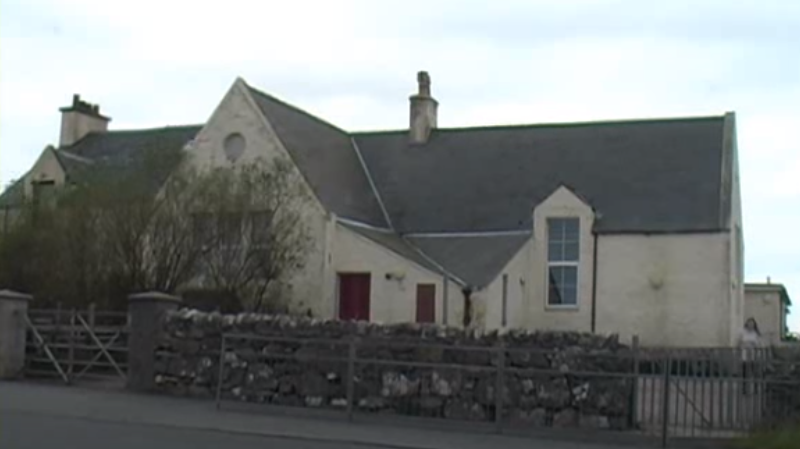
Mary writes:
Ar n-àite. What role can CEUT play in the current funding desert?
Latha math a h-uile duine.
A disclaimer. The ideas I will try to put down here are my own and are biased, so please do not take this rant as reflecting the CEUT Board’s thinking in any way.
Why are some small charities on North Uist finding it so hard to get funding? Although the island has been gifted generously for the new pier and the promised ferry, our island infrastructure and offer to visitors sorely needs further support, if North Uist is not to remain a one-day wonder, to be travelled through, with visitors missing the many ways they might explore our unique heritage and environment. Are our several volunteer-run small, but excellent organisations to remain the Cinderellas at the ball? Comann Eachdraidh Uibhist a Tuath, despite our recent Levelling Up and Regeneration Fund setbacks, are more determined than ever to refurbish Sgoil Chàirinis and bring our collections home from Benbecula, however gradually!
CEUT’s vision for Sgoil Chàirinis is:
- A welcoming space anchored in the community to meet the needs of old, young and isolated alike.
- Learning from our heritage and island environment to move forward sustainably into the future using our tangible and intangible resources.
- Supporting the roots of Gaelic language and expression in a community with Gaelic at its heart.
Maybe one reason for our apparent invisibility on the funding scene could be that CEUT has not featured or been included in any of the more centralised and prestigious schemes such as the Islands Fund, or the Great Place Scheme? In turn, could this invisibility also be due to the centralised perceptions so apparent in the Scottish Government’s Culture Strategy, (2020)? In this document heritage briefly appears almost as an afterthought, as an extra, a bit player, on the stage of Art? It appears to recognise ‘each community’s own local culture in generating a distinct sense of place, identity and confidence’ and states, ‘place, -community, landscape, language and geography – is important and reflects the creativity of the past and provides inspiration for the cultural expression today’. This definition seems to downplay the powerful and active connections that the unique lived experiences of the past and their representations offer to our communal learning, resilience and ‘ways of being’ today.
According to more recent National Heritage Lottery Fund guidelines, their emphasis has now shifted: promote inclusion and involve a wider range of people (a mandatory outcome), boost the local economy, encourage skills development and job creation, support wellbeing, create better places to live, work and visit and improve the resilience of organisations working in heritage. The economic inferences here are clear.
Sgoil Chàirinis is perfectly positioned on the main road, a natural stopping off and resting place on the Hebridean Way, close to Teampull na Trìonaid, and a natural gateway to North Uist and its tangible and intangible riches. The school, familiar and treasured by so many local people, promises to be a very useful staging post, linking well with Taigh Chearsabhagh and our Museum there. (CEUT’s purchase of the school was as a result of a planned extension beside the Museum, for which we were given Regeneration funding in 2015, being turned down at the planning stage because of the increasing flood risk.)
We have been continuously supported through our travails by Museums Galleries Scotland as an Accredited Museum. We are very grateful to them for keeping us afloat, especially recently with their Resilience Funding, which has helped us to hang on by our fingernails to keep Sgoil Chàirinis. Miraculous really. MGS have also been central in funding our digital archiving work. The Association of Independent Museums have supported our important links with Barbados Museum by funding research and our teenagers’ films where Feasgar Diluain have recorded storytellers and their seanchas.
A major funder recently has been the British Science Association and the Wellcome Trust through the Ideas Fund. This Fund is breaking exciting new ground by encouraging researchers to work collaboratively with communities on wellbeing projects which equally benefit both organisations. Our aims, in looking at what research can bring to our practice, and analysing in what ways heritage promotes wellbeing are:
- Learn how our current wellbeing activities can be improved by working with health partners through heritage – Aberdeen University
- Discover how recent research into the community use of the Gaelic language can enrich our Gaelic activities – Language Sciences Institute, UHI
- Explore how digital activities can contribute to our local sense of place, value, identity, and wellbeing. St Andrews University, (Phase 1)
- Look at how the community can use these pilot studies to shape the development of Sgoil Chàrinis
In the New Year we are hoping to invite other small local charities to see what benefits we can all bring to each other by planning together how we can support each other, rather than by working in isolation. We are also planning to gather more evidence using the themes that emerged from our members’ survey this year, by holding a series of wellbeing reminiscence workshops, short interactive talks and open activities afternoons on Tuesdays, headed up and inspired by the very successful volunteer-led, monthly ‘Cupan’ sessions. Through February and March we will hold our family, pop-up Gaelic cafés on Saturday mornings, with a beginners’ table and other exciting Gaelic activities.
Ideas about who and what Museums were founded for are undergoing rapid changes – the premises on which the authoritative, ‘traditional’ museum, with its exhibits fossilised in glass cases within its walls, are being questioned. Re-interpretation of what kinds of sites these should become, how they can widen their inclusivity and operations within their local environment and beyond, becoming sites of ‘social conscience’ is foremost in these discussions. bell hooks – deliberately spelt lowercase – wrote that ‘to be truly free, we must dare to create lives of sustained, optimal wellbeing and joy’. Let’s go for it?
CEUT Reflections 2
Here’s the second of our series of blogposts by Mary Morrison in which she reflects on the Aire Air Sunnd project led by Comann Eachdraidh Uibhist a Tuath. As with her previous post comments are welcome!
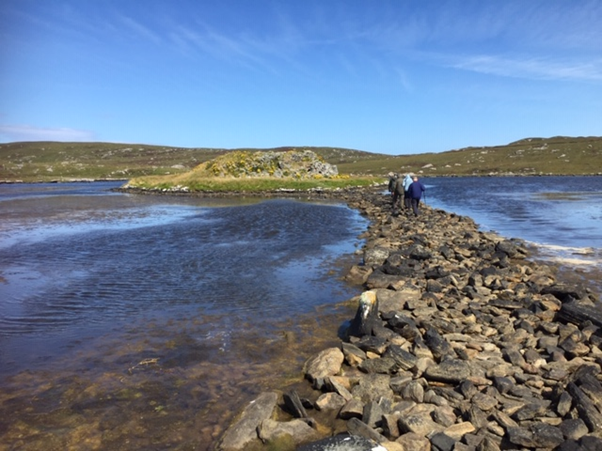
Picture – Vanessa Langley: Gaelic heritage walk to Dùn an Sticir
Mary writes:
Pool of scattered thoughts – The Feedback Imperative.
The organiser’s bane, the participants’ nightmare and the funders’ staple diet.
When, however, that feedback comes in the form of a poem, reflecting on CEUT’s Gaelic heritage walks and summer festival, such creative ‘evaluation’ from a participant can be astonishing, rewarding and moving.
A BLESSING
A blessing to walk this green land
with its flowers,
yellow and purple.
To learn is history
ancient and old.
A blessing to hear tales from people
whose ancestors roamed here,
Interesting stories from a land
surrounded by white sands
and the wild waves of its light blue sea.
A blessing to learn the language
amid strawberries and cherries
biscuits and tea.
A language familiar
but also unfamiliar.
Meleri, thank you for your inspirational writing.
(By the way, the strawberries and cherries were not growing on the machair, but shop bought, to put on the tables at Sgoil Chàirinis during our wellbeing afternoons!)
We are always glad for Comann Eachdraidh Uibhist a Tuath to get any feedback about our funded activities, but a gift, such as this poem, is a lasting treasure for those darker moments in voluntary organisations. Any volunteer feels some guilt and embarrassment when imposing the feedback chore on participants in their activities; it’s as if you are coercing guests at a meal to try out one more helping, one cake too many? And it’s always hard to know the best way to do this. Recently, because it was mostly too windy to hand out the prepared slips of paper, or to expect responses on the spot, we sent a ‘no pressure’ email after each of CEUT’s four Gaelic heritage walks, leaving it open for people to reply – a method that evoked only a few written responses. However those who did reply astonished us with their creative, thorough and honest reflections.
We sent out fifty emails to those who had joined one or more of our walks, as follows: If you have time, you might like to reflect on how you felt about the walk. Here are some prompts you can use:
- What part or aspect of the walk did you enjoy most – and why?
- Did you learn anything new on the walk?
- How important is it to use the Gaelic place names and related stories ?
- Should CEUT provide more of these walks?
- Do any special feelings on or after the walk come to mind?
If you have any photos, writing, or art work inspired by the walk please feel free to share these.
Many of you sent in your telling and expert photographs; we have archived these as your active testimonies to the walks. Taing mhòr.
One of the written reflections came from an enterprising cyclist, Janey, who had come to the island from New Zealand on an international cyclists exchange scheme. (A scheme where you stay free with a host for six weeks, provided you work in the house or garden for four hours a day, and try not to use any public transport other than ferries or trains for longer journeys.)
We have learnt a lot from her detailed and constructive email – thank you Janey! Thanks too for your shock on another occasion. You pointed out that in New Zealand everyone brings her/his own cup to gatherings to conserve energy, time and the planet. Right now, at Sgoil Chàirinis, CEUT doesn’t make people bring their own cup with them, but your observation is timely – we do need to think about reducing waste and energy wherever possible!
You then alerted us to the ‘www.ebi’ method of getting feedback, ‘what worked well, even better if’ and pointed out that this wasn’t part of what we had asked for. It should have been; thank you – we will make sure we use this, and will be reminded of you, in future.
Under that heading you gave us some excellent pointers for the future:
- a very brief round of everyone at the beginning before setting off – who/ from where/ historical connections to this area/ what, if anything, is your particular interest in the history of this area? This would have helped me connect more easily with others during the walk.
- I’d have enjoyed a very brief teaching of one (Gaelic) phrase, each time and be encouraged to practice this with others as we walk. This would bring the language alive for me and add an element of fun and connection with others.
- I’m curious if the locals’ stories that people share of their history get recorded anywhere. (Perhaps a ‘scribe’ could be appointed at each walk so that this information becomes part of the next newsletter?) The sharing and gathering of these local stories seems an important element in building this group.
- I would enjoy being offered the chance to bring a thermos and biscuits and take a 10 minute break half way through the walk shared with others – to me sharing food together builds community
Well, I immediately realised that one of the new features we had tried to build into the walks, (a QR code to scan, to provide an information sheet and a contact email for further details), didn’t seem to have worked very effectively. Was it the unfamiliarity of such technical methods, the poor connectivity on the islands, or had we not provided enough information on the posters? How can we do this better next time?
Weather permitting, the idea of ‘sharing’ a snack seems a great idea! We encourage everyone on the handouts, (that didn’t connect this time), to bring these, but marking out a ‘Janey’ spot will become a feature of these walks in future.
We must also try to be more aware of the ways in which we can build in further inclusiveness; firming up the pre-walk contacting, information and introductions will be essential next time.
Other responses to our questions may have suggested that we only wanted to hear about what worked well? Finding better ways of teasing out what we can do better, so as to guard against being too celebratory, inviting non-critical evaluation will shape our next steps. An area to explore further with our research partners.
We will, however look at some of the celebratory vignettes, drawn from five emails, under the questions we posed for the meaning they convey:
- What part or aspect of the walk did you enjoy most- and why?
– the part I enjoyed most about the walk was hearing different people’s stories adding and enhancing the basic history of each site – my sense this group could be reframed as a ‘History Club’ – that was how it came across to me – the informality, friendliness and shared contribution was welcome; I was expecting the stuffiness and hierarchical nature of a ‘society’! – North Uist itself is so full of the ruins of human habitation, you are literally tripping over them, and I started to see every mound and rock as something possibly archaeological!
- Did you learn anything new on the walk?
I valued the chance to hear about local history from those with ‘lived experience’
I learnt so much more about the Teampull, its history over such a long period of time, the people that have stood on the same piece of earth I was standing on!
From Neolithic to the more modern (Vallay House), we can see that humans are transitory in the landscape but leave their mark, we are tiny and nature is so much bigger than us. Emphasises we are as humans the same, despite what age we live in.
- How important is it to use the Gaelic place names and related stories?
I cannot stress enough the importance of using Gaelic names and related stories, after all that is what they are. I may not understand the language, but it means so much to me to get a full and complete picture to immerse myself in. It feels rounded and whole by being true to the Gaelic language.
I valued the Scots Gaelic being spoken and the way you introduced it as important for community.
Wonderful to learn and hear Gaelic spoken.
- Should CEUT provide more of these walks?
What you are doing is so good, please keep on with walks/feedback as I think they are invaluable.
Thank you for organising these wonderful and interesting walks. So very glad I came across them.
- Do any special feelings on or after the walk come to mind?
I felt joy in having knowledge of the (Priest’s) Stone to feedback to my host in Middlequarter as well as to other locals. None of them previously knew of the stone and its significance.
Afterwards I have been left thinking how everyday life would have been for those living within the place over all the centuries. How somewhere so quiet and beautiful was the setting of such a gruesome battle (Ditch of Blood) and the dichotomy of that. The graves, the oldest I found being hand carved and beautiful (so much effort and care), the most recent the war grave of 17 year old A Macauley (what a serene place for him to rest, so young, so sad).
p.s. I will follow on with more photos, can only do a few at a time!
The detail here is imaginative and expressive. These visitors captured eloquently, as the poem did, how allowing the Gaelic storytelling breaks, whilst exploring the sites we visited, gave walkers time to enter and reimagine our Gaelic past.
So we need from our researchers how best to turn these reflections into evidence for our funders? In what ways can we articulate how our Gaelic walks to heritage sites help community wellbeing? Do we really need to quantify experiences that seem to be unique to each walker for any evaluation to count as valid?
This blogging cailleach, in inviting these responses, was reminded to look up a quotation from her PGCE days, which had served her well, both to inspire writing in the classroom and, at times, to resolve conflicts within and without it:
Everyone sees a different moving picture of an event in which all are involved.
There are differences in interpretation and disagreement about what actually happened, but these are not necessarily right or wrong. The accounts differ because we all played a different part in the same ball game. Shipman, 1974.
